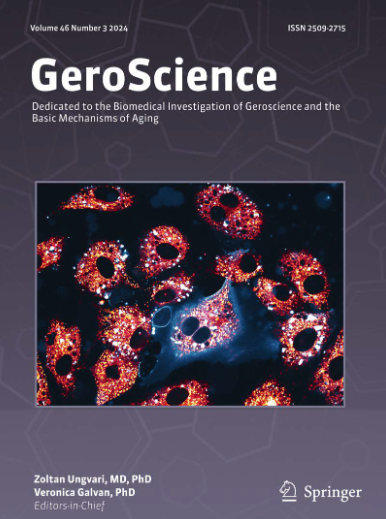加速度计测量的身体活动和久坐行为与老年人意外住院的关联:一项为期6年的纵向研究。
IF 5.3
2区 医学
Q1 GERIATRICS & GERONTOLOGY
引用次数: 0
摘要
规律的身体活动(PA)和减少久坐行为(SB)是促进健康和降低慢性疾病风险的公认因素。然而,它们与计划外住院的关系尚不清楚。我们的目的是调查PA和SB参数与老年人意外住院风险和住院时间之间的关系。我们分析了瑞典SNAC-K研究(2016-2018)中657名年龄≥66岁的老年人的数据。使用ActivPAL3加速计评估PA和SB。采用多校正Cox和Laplace回归来检查PA和SB与6年计划外住院的关系。采用负二项回归模型来检验其与住院时间的关系。每1000步/天,100次低强度PA (LPA)步行,以及15分钟/天的中高强度PA (MVPA),意外入院的风险降低(风险比[HR] 0.95, 95%可信区间[CI] 0.91-0.99, HR 0.77, 95%CI 0.61-0.96, HR 0.91, 95%CI 0.83-1.00)。较高的步数和MVPA也与较短的住院时间相关(每1,000步的IRR: 0.91, 95% CI: 0.86-0.96;每15分钟IRR MVPA: 0.85, 95% CI: 0.75-0.96)。在完全调整模型中,没有发现SB或步行事件与住院时间有显著关联。我们的研究结果表明,在老年人中,较高的步数和更多的MVPA参与与住院风险降低和住院时间缩短有关。此外,更多的LPA步行活动与较低的住院风险有关。这些结果支持促进有规律的步行和频繁的PA作为减轻老年人医疗负担的策略。本文章由计算机程序翻译,如有差异,请以英文原文为准。
Association of accelerometer-measured physical activity and sedentary behavior with unplanned hospitalization in older adults: a 6-year longitudinal study.
Regular physical activity (PA) and reduced sedentary behavior (SB) are well-established factors in promoting health and lowering the risk of chronic diseases. However, their relationship with unplanned hospitalizations remains unclear. Our aim was to investigate the associations between PA and SB parameters and the risk of unplanned hospital admissions, and the length of hospital stays in older adults. We analyzed data from 657 older adults aged ≥ 66 years from the Swedish SNAC-K study (2016-2018). The ActivPAL3 accelerometer was used to assess PA and SB. Multi-adjusted Cox and Laplace regressions were applied to examine PA and SB in relation to 6-year unplanned hospitalizations. Negative Binomial Regression models were employed to examine their associations with the length of hospital stays. For each 1000 steps/day, 100 low-intensity PA (LPA) walking events, and 15 min/day of time spent in moderate-to-vigorous PA (MVPA), the risk of unplanned admissions decreased (hazard ratio [HR] 0.95, 95% confidence interval [CI] 0.91-0.99, HR 0.77, 95%CI 0.61-0.96, and HR 0.91, 95%CI 0.83-1.00, respectively). Higher step counts and MVPA were also associated with shorter hospital stays (IRR per 1,000 steps: 0.91, 95% CI: 0.86-0.96; IRR per 15 min MVPA: 0.85, 95% CI: 0.75-0.96). No significant associations were found for SB or walking events with hospital stay in fully adjusted models. Our results suggest that higher step counts and greater participation in MVPA are associated with a reduced risk of hospital admissions and shorter hospital stays in older adults. Additionally, a greater number of LPA walking events was linked to lower risk of hospital admissions. These results support the promotion of regular walking and frequent PA as strategies to reduce healthcare burden in aging populations.
求助全文
通过发布文献求助,成功后即可免费获取论文全文。
去求助
来源期刊

GeroScience
Medicine-Complementary and Alternative Medicine
CiteScore
10.50
自引率
5.40%
发文量
182
期刊介绍:
GeroScience is a bi-monthly, international, peer-reviewed journal that publishes articles related to research in the biology of aging and research on biomedical applications that impact aging. The scope of articles to be considered include evolutionary biology, biophysics, genetics, genomics, proteomics, molecular biology, cell biology, biochemistry, endocrinology, immunology, physiology, pharmacology, neuroscience, and psychology.
 求助内容:
求助内容: 应助结果提醒方式:
应助结果提醒方式:


